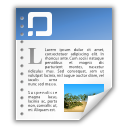| dc.contributor.advisor | Woodman, Geoffrey | |
| dc.contributor.author | Ellenburg, Christine | |
| dc.date.accessioned | 2020-09-01T21:21:51Z | |
| dc.date.available | 2020-09-01T21:21:51Z | |
| dc.date.issued | 2017-04-26 | |
| dc.identifier.uri | http://hdl.handle.net/1803/15586 | |
| dc.description.abstract | This project investigated the benefits and costs of cueing on memory. Participants were shown images, some of which were cued as especially important to remember, in encoding blocks. The percentage of images cued changed from 20% to 50% between blocks. After each encoding block participants entered a test block in which participants were shown some repeated and some novel images. Participants were then asked if they had or had not seen the image previously and for a confidence level of 60%, 80% or 100%. We predicted that the accuracy of and confidence level of participants would depend on the percentage of images that were cued in the encoding block. Results showed an increase in cueing costs, through a decrease in participants’ accuracy and confidence, when more than 20% of the images were cued during encoding blocks. | en_US |
| dc.description.sponsorship | Thesis completed in partial fulfillment of the requirements of the Honors Program in Psychological Sciences | en_US |
| dc.language.iso | en_US | en_US |
| dc.publisher | Vanderbilt University | en_US |
| dc.subject | Human Memory | en_US |
| dc.subject | Cueing Effect | en_US |
| dc.subject.lcsh | Cognitive psychology | en_US |
| dc.title | Memory Encoding: The Costs and Benefits of Cueing | en_US |
| dc.type | Thesis | en_US |
| dc.description.college | Vanderbilt University | en_US |
| dc.description.school | Arts and Science | en_US |
| dc.description.department | Psychology | en_US |

